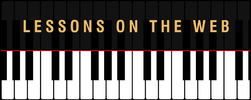|
Piano players face a unique challenge as they learn how to navigate reading piano music and playing that music on the piano keyboard. The challenge is that we have to use both hands and each hand is playing “in a completely different language” – meaning each hand is playing in a different clef and often, in a different rhythm from the other hand. How is this challenging?
There are some specific ways to address these challenges that will help you overcome any issues you have with two-handed playing. Before we start playing with both hands together we have already learned the notes in each clef and have practiced them in each hand separately, not together. That in itself is a challenge, so remember that and be encouraged if you start to doubt your ability to put it all together! When we are ready to put both hands together in our playing, there are specific things that we can do in our practice time that will make a huge difference in how fast and how well we are able to overcome and challenges we’re facing. One of the best ways to get used to playing with both hands together is by first practicing two-handed scales. Oh boy! J Why are scales the first thing we start with?
The following video will go over everything you need to know to start using scales to help you play better with both hands at the same time. You will learn how many scales to learn each week, how to practice your scales, what tempo you will start out playing your scales in, and several other great tips that you will want to use in your practicing…so make sure to watch this short video before moving on to the next section. The next tip that we will cover in this post will take you further than just scales…you will incorporate specific exercises that will utilize your knowledge of scales and challenge you to play more advanced music with both hands at the same time. The Hanon Exercises are very well known among pianists because they are so good at helping us develop coordination and agility in our two-handed playing. Each exercise is made up of repeated patterns of notes that when played, train our fingers much like a coach trains a gymnast. These exercises are not difficult to learn because many of them have repeated patterns that are easy to play once you’ve gone over the notes. This video will show you where you can find some Hanon exercises online and will go over some samples of them at the keyboard so you can hear and watch me play them. Just like the video on scales, you will learn how to practice these exercises in the best way to really see and feel the improvement in your two-handed piano playing. Make sure to grab your metronome before you start practicing! Take your time in working with scales and the Hanon exercises and be patient with yourself and your body! Remember that just because we comprehend something intellectually, it doesn’t mean that our bodies are at that same place. The training part of learning music comes in repeating correct motions so that our bodies learn and “remember” what do to – when. Each day that you put in a little good work on this, you are increasing your ability to play how and what you want to! Stay Tuned to PianoLessonsOnTheWeb.com to learn much more and achieve your dream of playing the piano! Leave a Reply. |
AuthorMost blogs written by Archives
June 2020
Categories
All
|

 RSS Feed
RSS Feed